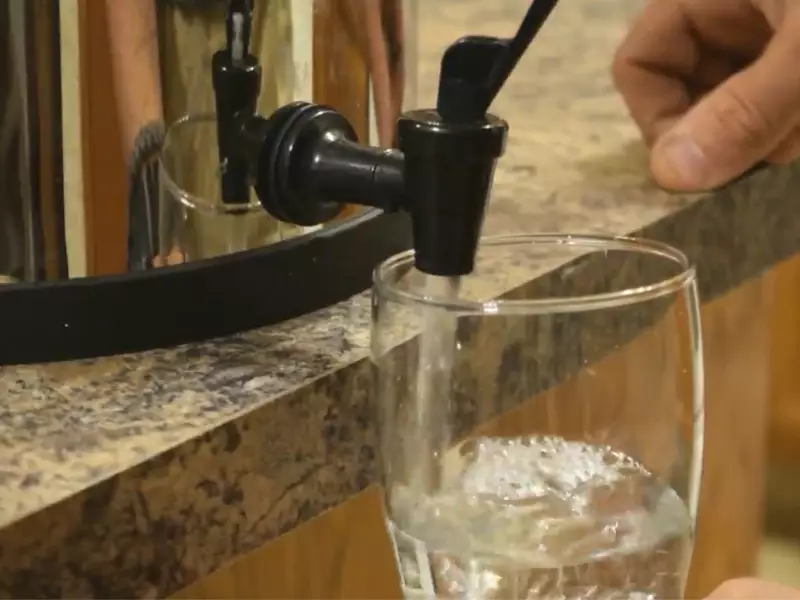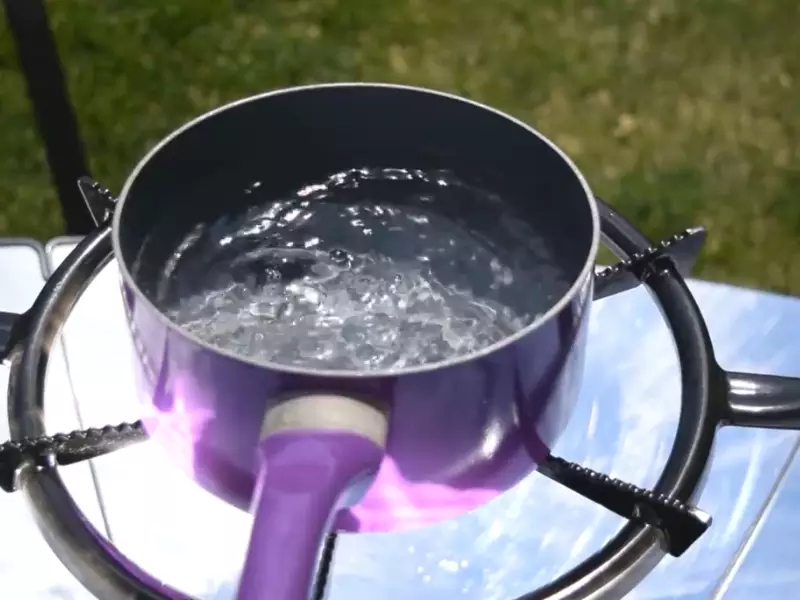The ominous shadow of a nuclear fallout affects not only the air and soil but also reaches deep into our water sources. Every droplet may hide a potential risk. This leads us to a pressing concern: the safety of well water post such catastrophic events.
Nuclear fallout can contaminate various water sources, including wells. However, several factors determine the extent of this contamination and its implications on human health.
Well water, often deemed a purer source than surface water, could have varying levels of safety depending on the depth, surrounding soil, and proximity to the fallout.
Nuclear Fallout: A Brief
Nuclear fallout is one of the most daunting consequences of nuclear events. Its impact is vast, touching almost every aspect of the environment.

What causes nuclear fallout?
Nuclear fallout refers to the radioactive dust and ash propelled into the atmosphere following a nuclear explosion. Once in the atmosphere, these radioactive particles, a mix of fission products, can be carried by winds over great distances. Eventually, gravity pulls them back to Earth, leading to widespread contamination.
Major events leading to fallout
Several incidents throughout history have resulted in significant nuclear fallout:
- Hiroshima and Nagasaki (1945): Atomic bombings led to immediate and lasting environmental and health effects.
- Chernobyl Disaster (1986): A reactor explosion at the Chernobyl Nuclear Power Plant released large quantities of radioactive particles into the atmosphere, affecting vast regions across Europe.
- Fukushima Daiichi (2011): An earthquake-triggered tsunami disabled power supply and cooling of three reactors, leading to radioactive releases.
These incidents, among others, have highlighted the importance of understanding and preparing for the implications of nuclear fallout.
Impact on Water Sources
Water sources, being pivotal for survival, become a primary concern after a fallout event.
How fallout affects surface water
When radioactive particles return to Earth, they can mix with rain or settle on bodies of water. Surface water sources, like rivers, lakes, and ponds, are immediately exposed to these particles. Ingesting or using contaminated water can have severe health repercussions due to the radioactive nature of these elements.
Well water versus surface water
While surface water is exposed directly to airborne particles, well water benefits from being shielded underground. The depth and layers of earth above it act as a barrier, filtering many contaminants. However, the extent of protection depends on several factors, some of which include the well’s depth, construction, and the nature of the surrounding soil.
Factors Determining Safety
Depth of the well
A well’s depth plays a critical role in its protection. Shallow wells are more prone to contamination as they are closer to the surface. In contrast, deep wells, usually those over 100 feet, benefit from additional layers of earth that can act as natural filters.
Soil type around the well
The soil composition is another determinant of safety. Clay soils, due to their compact nature, are better at preventing the downward movement of particles compared to sandy or gravelly soils, which can be more permeable.

Proximity to the fallout site
Distance matters. Wells situated closer to the epicenter of the fallout event are at higher risk. Radioactive particles decrease in concentration as you move away from the source, so wells located farther away might remain unaffected or face minimal contamination.
Contaminants from Fallout
Understanding potential contaminants helps in formulating effective response strategies.
Radioactive elements to be wary of
Key contaminants include Iodine-131, known for affecting the thyroid; Strontium-90, which can replace calcium in bones; and Cesium-137, persistent and able to affect soft tissues.
How they enter the water system
While initial contamination can occur through direct deposit by rain, a more prolonged threat is the gradual percolation of these contaminants through the soil during subsequent rains. This process can introduce radioactive elements into the groundwater, potentially reaching well sources.
Protection Mechanisms for Wells
Ensuring a well’s safety involves both natural and man-made protective measures.
Natural filters in action
As previously mentioned, the earth acts as a natural filter. Layers of rocks, sand, and clay impede the movement of contaminants, trapping many before they reach water sources.
Importance of well construction
Well construction plays a pivotal role. Properly sealed wells, with casings that prevent surface water infiltration, offer a line of defense against contaminants. The quality of the sealing material, the integrity of the well cap, and the absence of cracks are all factors that can influence a well’s vulnerability.
Testing Well Water Post Fallout
With potential risks looming, testing becomes paramount.
Why it’s essential
Simply put, it’s a matter of health and safety. Early detection of contaminants allows for timely intervention, potentially averting long-term health issues.
Available testing methods
Several methods can gauge water safety:
- Radiological testing kits: These DIY kits can offer preliminary insights into contamination levels.
- Professional laboratory testing: For a comprehensive analysis, sending samples to specialized labs provides detailed insights.
- Geiger counters: While they give a general overview of radioactivity, they may not pinpoint specific contaminants.

Interpreting results
Understanding test outcomes is crucial. High levels of radioactive isotopes call for swift measures, be it water treatment, seeking alternative sources, or even relocating.
Mitigation Measures
If contamination is detected, taking corrective actions becomes essential.
Filtration techniques
Several techniques can purify water:
- Activated charcoal filters: These are effective for removing specific isotopes, trapping them in the porous charcoal structure.
- Reverse osmosis systems: By forcing water through specialized membranes, these systems can filter out many contaminants.
- Distillation processes: By boiling and then condensing water, many radioactive particles are left behind.
Using bottled or alternative water
In situations where contamination levels are high and immediate purification isn’t possible, relying on bottled water or sourcing from unaffected areas becomes vital.
Timeframe for well water safety
Radioactive decay is a natural process, where isotopes lose their radioactivity over time. Some, like Iodine-131, have short half-lives and decay quickly, while others, such as Cesium-137, can persist for years. Monitoring and patience are key.
Personal Safety Recommendations
Even if well water is deemed safe, precautions during collection and storage can further reduce risks.
Protective gear during collection
Given the potential for airborne contaminants, wearing masks, gloves, and even protective clothing when near the well can minimize exposure.
Storing water safely
Using sealed, clean containers for storage can prevent further contamination. It’s also recommended to keep stored water away from direct sunlight and heat sources to preserve its quality.
Frequently Asked Questions
How long after a fallout can I test my water?
Wait a few days post fallout to allow radioactive particles to settle and for initial rains to pass, which might carry contaminants to the ground.
Are there any visible signs of contamination?
Unfortunately, no. Radioactive contaminants are typically invisible to the naked eye, emphasizing the importance of testing.
Can boiling well water remove radioactive contaminants?
No, boiling merely kills bacteria and pathogens. Radioactive contaminants remain, and boiling might even concentrate them.
Conclusion
Nuclear fallout and its aftermath raise multiple concerns regarding water safety. With knowledge and precautions, we can navigate these troubled waters with more confidence.
It’s paramount for individuals to be proactive, assess their well’s vulnerability, and take necessary steps to ensure their and their family’s safety.